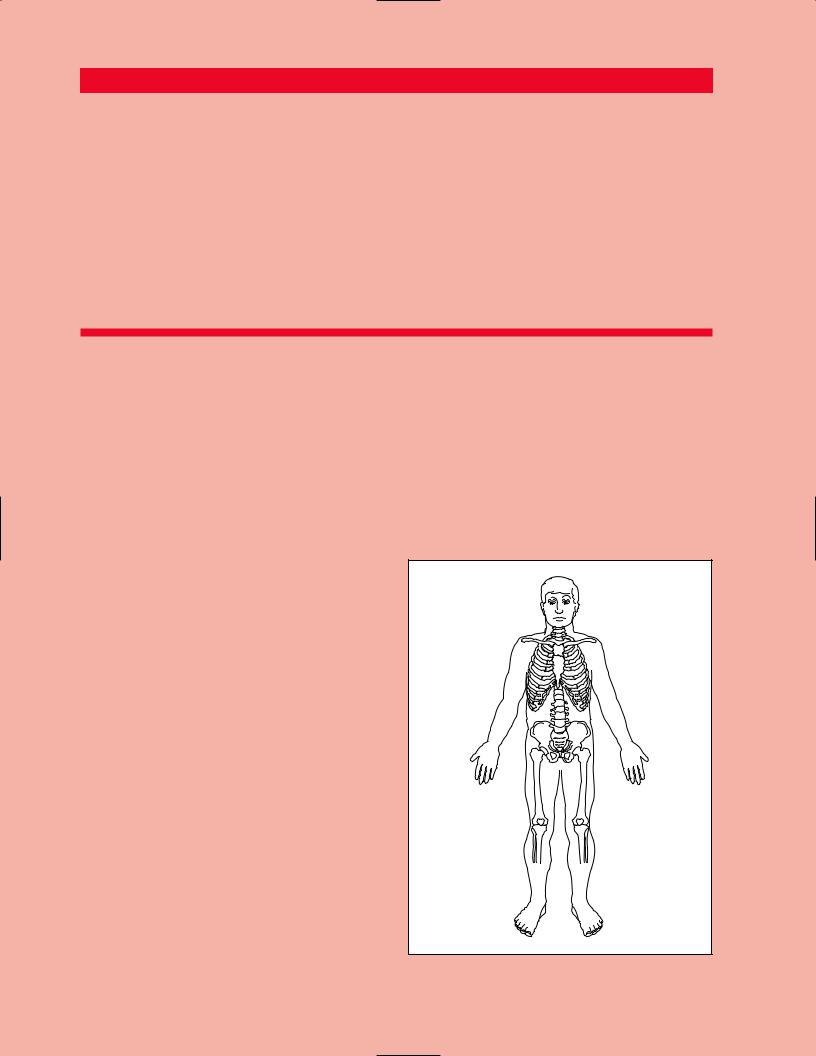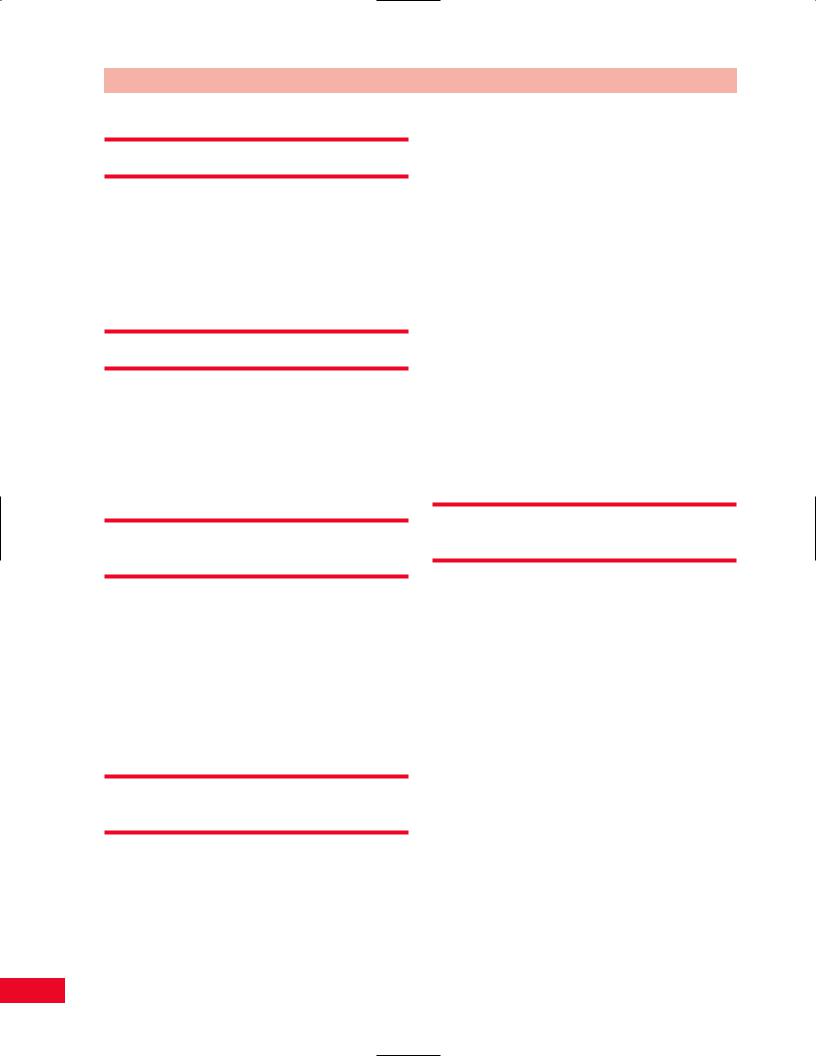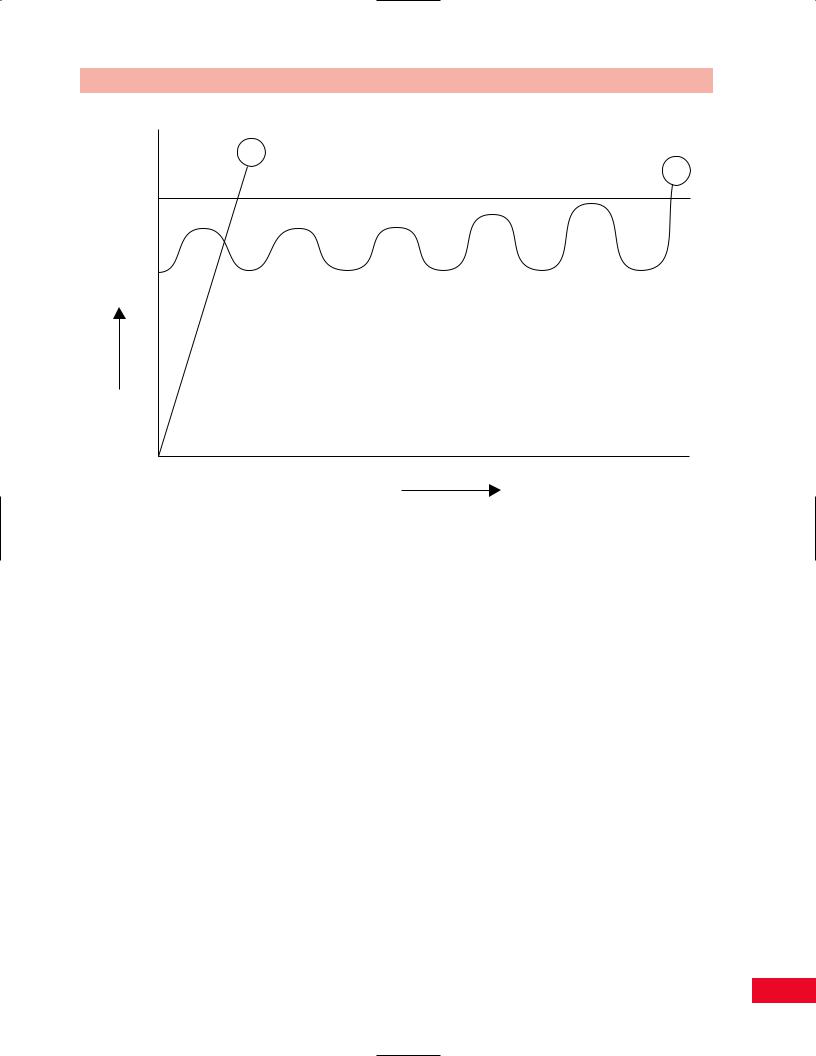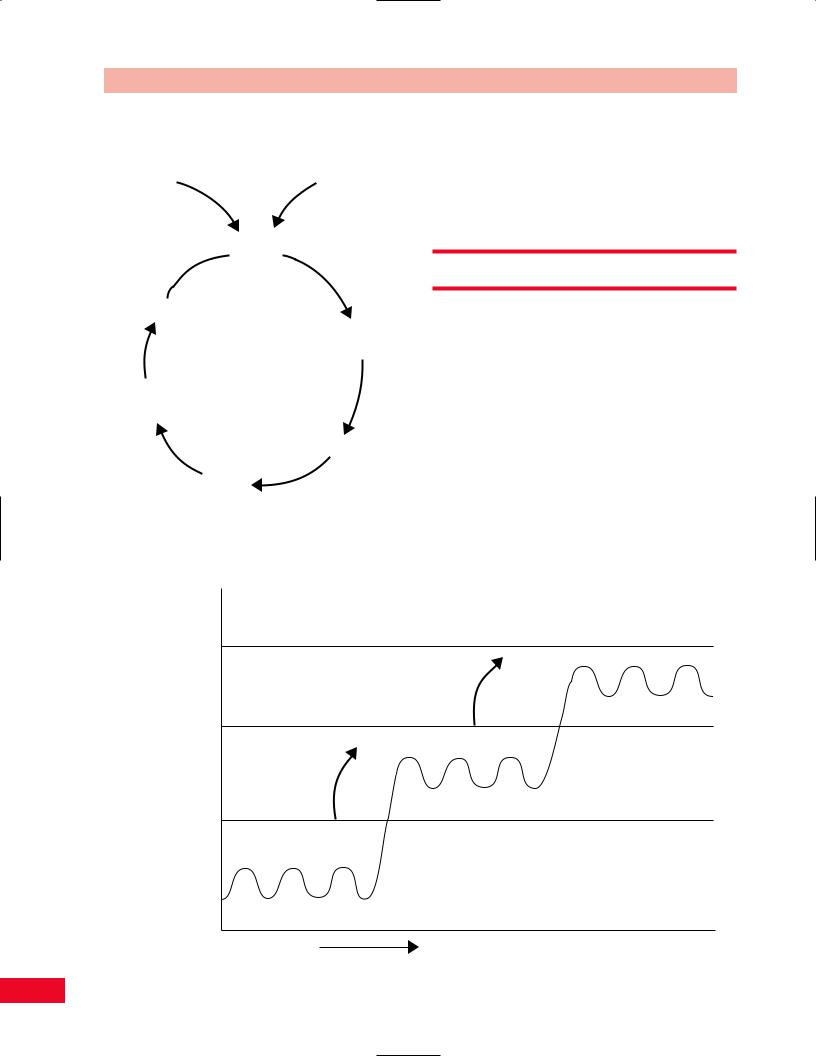
MusculoSkeletal Exam
.pdf
Musculoskeletal
Examination
2nd Edition
Jeffrey M. Gross, MD
Clinical Associate Professor of Rehabilitation Medicine
New York University School of Medicine
Medical Director
Union Square Rehabilitation and Sports Medicine
New York, New York
Joseph Fetto, MD
Associate Professor of Orthopedic Surgery
New York University School of Medicine
Director of Orthopedic Surgery
Manhattan V.A. Medical Center
New York, New York
Elaine Rosen, PT, DHSc, OCS
Associate Professor of Physical Therapy
Hunter College
City University of New York
Partner
Queens Physical Therapy Associates
Forest Hills, New York

©2002 by Jeffrey M. Gross, Joseph Fetto, and Elaine Rosen
Blackwell Science, Inc.
Editorial Offices:
Commerce Place, 350 Main Street, Malden,
Massachusetts 02148, USA
Osney Mead, Oxford OX2 0EL, England
25 John Street, London WC1N 2BS,
England
23 Ainslie Place, Edinburgh EH3 6AJ,
Scotland
54 University Street, Carlton, Victoria
3053, Australia
Other Editorial Offices:
Blackwell Wissenschafts-Verlag GmbH,
Kurfürstendamm 57, 10707 Berlin,
Germany
Blackwell Science KK, MG Kodenmacho
Building, 7–10 Kodenmacho
Nihombashi, Chuo-ku, Tokyo 104,
Japan
Iowa State University Press, A Blackwell Science Company, 2121 S. State Avenue, Ames, Iowa 50014-8300, USA
Acquisitions: Laura DeYoung
Development: Angela Gagliano Production: Rosie Hayden Manufacturing: Lisa Flanagan Marketing Manager: Toni Fournier Cover design by Meral Dabcovich, VisPer Interior design by: Simon Witter
Typeset by Graphicraft Limited, Hong Kong
Printed and bound by Edwards Brothers Inc, Ann Arbor
Printed in the United States of America 02 03 04 05 5 4 3 2 1
The Blackwell Science logo is a trade mark of Blackwell Science Ltd., registered at the United Kingdom Trade Marks Registry
All rights reserved. No part of this book |
D I S T R I B U T O R S |
|
may be reproduced in any form or by |
The Americas |
|
any electronic or mechanical means, |
Blackwell Publishing |
|
including information storage and |
c/o AIDC |
|
retrieval systems, without permission in |
P.O. Box 20 |
|
writing from the publisher, except by a |
50 Winter Sport Lane |
|
reviewer who may quote brief passages |
Williston, VT 05495-0020 |
|
in a review. |
(Orders: Tel: 800-216-2522; |
|
|
|
Fax: 802-864-7626) |
Library of Congress Cataloging-in- |
|
|
Publication Data |
Australia |
|
|
|
Blackwell Science Pty, Ltd. |
Gross, Jeffrey M., 1957– |
54 University Street |
|
Musculoskeletal examination / Jeffrey M. |
Carlton, Victoria 3053 |
|
Gross, Joseph Fetto, Elaine |
(Orders: Tel: 03-9347-0300; |
|
Rosen.a2nd ed. |
Fax: 03-9349-3016) |
|
p. ; cm. |
|
|
Includes bibliographical references and |
Outside The Americas and Australia |
|
index. |
|
Blackwell Science, Ltd. |
ISBN 0-632-04558-2 (pbk.) |
c/o Marston Book Services, Ltd. |
|
1. Musculoskeletal |
P.O. Box 269 |
|
systemaExamination. |
Abingdon |
|
[DNLM: |
1. Musculoskeletal Diseases |
Oxon OX14 4YN |
adiagnosis. |
2. Musculoskeletal |
England |
Physiology. |
3. Musculoskeletal System |
(Orders: Tel: 44-01235-465500; |
aanatomy & histology. 4. Physical |
Fax: 44-01235-465555) |
|
Examinationamethods. WE 141 G878m |
|
|
2002] I. Fetto, Joseph. II. Rosen, |
|
|
Elaine. III. |
Title. |
|
RC925.7 .G76 2002 616.7′054adc21
2001003146

Contents
How to Use this Book, v
Acknowledgments, vi
1Introduction, 1
2Basic Concepts of Physical Examination, 15
3Overview of the Spine and Pelvis, 33
4The Cervical Spine and Thoracic Spine, 36
5The Temporomandibular Joint, 82
6The Lumbosacral Spine, 96
7Overview of the Upper Extremity, 140
8The Shoulder, 142
9The Elbow, 195
10The Wrist and Hand, 233
11The Hip, 292
12The Knee, 335
13The Ankle and Foot, 379
14Gait, 433
Appendices, 446 Bibliography, 450
Index, 453
iii


How to Use this Book
Musculoskeletal Examination is to be used as both a teaching text and a general reference on the techniques of physical examination. This volume represents the joint authoring efforts of a physiatrist, an orthopedic surgeon, and a physical therapist and presents the information in a clear and concise format, free of any professional biases that reflect one specialty’s preferences. The importance of this will be seen as we take you through each anatomical region and delineate the basic examination. Included in each chapter are the abnormalities most frequently encountered noted while performing an examination.
The book is organized into regional anatomical sections including the spine and pelvis, the upper extremity, and the lower extremity. The book opens with two chapters that define the structures of the musculoskeletal system and discuss the basic concepts and parts of the musculoskeletal exam. A final chapter describes the examination of gait.
Each main chapter is organized in an identical manner:
•overview of the anatomical region
•observation of the patient
•subjective examination
•gentle palpation
•trigger points (where applicable)
•active movement testing
•passive movement testing
•physiological movements
•mobility testing
•resistive testing
•neurological examination
•referred pain patterns
•special tests
•radiological views.
In Chapter 2, Basic Concepts of the Physical Examination, we provide you with a framework for performing the examination, beginning with observation and ending with palpation. However, in each regional anatomy chapter, palpation follows observation and subjective examination and precedes all other sections. This is deliberate. For reasons of length, we felt it important to discuss each anatomical region and its own special anatomical structures as soon as possible in each chapter. This avoids repetition, gives you the anatomy early in each chapter, and then allows you to visualize each structure as you read the subsequent sections on testing. Hopefully this will reinforce the anatomy and help you apply anatomy to function and function to the findings of your examination.
Each chapter includes a generous number of original line drawings, many of which are two-color. These provide clear snapshots of how to perform each examination technique. Thirty-two x-rays and MRIs have been included to help you with radiological anatomy. Paradigms and tables provide additional information that will help you understand the how and why of each examination technique.
By using Musculoskeletal Examination as a guide and reference, the reader will be able to perform the complete basic examination and understand common abnormalities and their pathological significance. We hope that our readers will gain an appreciation for the intimate relationship between the structure and function of the components of the musculoskeletal system. This understanding should then enable any reader to make a correct diagnosis and a successful treatment plan for each patient.
v

Acknowledgments
The writing of Musculoskeletal Examination would not have been possible without the overwhelming support and understanding of my wife Elizabeth and my sons, Tyler and Preston. I also want to thank my parents, Malcolm and Zelda Gross, as well as my teachers, Dr. Joseph Goodgold, Dr. Bruce Grynbaum, Dr. Howard Thistle, and Dr. Matthew Lee for their guidance and efforts on my behalf.
J.G.
Thank you to my wife and family for their understanding, patience, support, and love.
J.F.
To my husband, Jed, for his unlimited patience, understanding, and encouragement.
To my business partner and friend, Sandy, for being there whenever I needed her.
To my family for their support, and to my many patients, colleagues and friends who have helped me grow.
E.R.
vi

1E
2
3
4
5
6H
7H
8
9
0
11
2
3
4
5
6
7
8
9
0
21
2
3
4
5
6
7
8
9
0
31
2
3
4
5
6
7
8
9
0
41
2
3
4
5
6
7
8
9H
0
1
2H
Chapter 1
Introduction

Introduction Chapter 1
Introduction
The intention of this book is to provide the reader with a thorough knowledge of regional anatomy and the techniques of physical examination. A second and equally important intention is to describe a method for the interpretation and logical application of the knowledge obtained from a physical examination.
What is a Physical Examination?
The physical examination is the inspection, palpation, measurement, and auscultation of the body and its parts. It is the step that follows the taking of a patient history and precedes the ordering of laboratory tests and radiological evaluation in the process of reaching a diagnosis.
physical examination. This methodology is derived from a clinical philosophy based on specific concepts. These concepts are as follows:
1If one knows the structure of a system and understands its intended function, it is possible to predict how that system is vulnerable to breakdown and failure (injury).
2A biological system is no different from an inorganic system in that it is subject to the same laws of nature (physics, mechanics, engineering, etc.). However, the biological system, unlike the inorganic system, has the potential not only to respond but also to adapt to changes in its environment.
Such concepts lay the foundation for understand-
ing the information obtained on physical examination. They also lead to a rationale for the treatment and rehabilitation of injuries. A correlation of this type of analysis is that it becomes possible to anticipate injuries. This in turn permits proactive planning for the prevention of injuries.
What is the Purpose of the Physical Examination?
The physical examination has two distinct purposes. The first is to localize a complaint, that is, to associate a complaint with a specific region and if possible, a specific anatomical structure. The second purpose of a physical examination is to qualify a patient’s complaints. Qualifying a complaint involves describing its character (i.e., dull, sharp, etc.), quantifying its severity (i.e., visual analog scale; grade I, II, III), and defining its relationship to movement and function.
How is the Physical Examination Useful?
By relating a patient’s complaints to an anatomical structure, the physical examination brings meaning to a patient’s history and symptoms. This, however, presupposes that the clinician possesses a thorough knowledge of anatomy. It also requires a methodology for the logical analysis and application of the information obtained from the patient’s history and
How Does the Musculoskeletal
System Work?
The musculoskeletal system, like any biological system, is not static. It is in a constant state of dynamic equilibrium. This equilibrium is termed homeostasis.
As such, when subjected to an external force or stress, a biological system will respond in a very specific manner. Unlike the inorganic system (i.e., an airplane wing that is doomed to fail after a predictable number of cycles of load), the biological system will attempt to reestablish an equilibrium state in response to a change that has occurred in its environment. In doing so, the biological system will experience one of three possible scenarios: adaptation (successful establishment of a new equilibrium state without breakdown), temporary breakdown (injury), or ultimate breakdown (death). These scenarios can be expressed graphically. Any system can be stressed in one of two modes: acute single supratolerance load or chronic repetitive submaximal tolerance load (Figure 1.1). In the first mode, the system that suffers acute failure is unable to resist the load applied. In the second mode, the system will function until some fatigue limit is reached, at which time failure will occur. In the biological system, either failure mode will initiate a protective-healing response, termed the inflammatory reaction. The inflammatory
2

Chapter 1 Introduction
X
failure Acute
X
Maximum tolerance limit
Chronic overuse failure
Stress
Time
Figure 1.1 Biological systems, like inorganic systems, can fail under one of two modes: an acute single supramaximal stress or repetitive submaximal chronic loading.
reaction is composed of cellular and humoral components, each of which initiates a complex series of neurological and cellular responses to the injury. An important consequence of the inflammatory reaction is the production of pain. The sole purpose of pain is to bring one’s attention to the site of injury. Pain prevents further injury from occurring by causing protective guarding and limited use of the injured structure. The inflammatory response is also characterized by increased vascularity and swelling in the area of injury. These are the causes of the commonly observed physical signs (i.e., redness and warmth) associated with the site of injury.
However, the problem with pain is that although it brings protection to the area of injury (the conscious or unconscious removal of stress from the injured area), and permits healing to take place by removing dynamic stimuli from the biological system, this removal of stimuli (rest) promotes deterioration of a system’s tolerance limit to a lower threshold. In this way, when the injury has resolved, the entire system, although “healed,” may actually be more vulnerable to reinjury when “normal” stresses are applied to the recently repaired structures. This initiates the “vicious cycle of injury” (Figure 1.2).
Contrary to this scenario is one in which the biological system successfully adapts to its new environment before failure occurs. This situation represents conditioning of a biological system. The result is hypertrophy, enhanced function and a consequent increase in the system’s tolerance limit. The concept acting here is that the biological system’s tolerance limit will adapt to increased demands if the demands are applied at a frequency, intensity, and duration within the system’s ability to adapt (Figure 1.3).
Therefore, during the physical examination, asymmetry must be noted and analyzed as representing either adaptation or deconditioning of a given system.
Any of these fundamental principles under which the musculoskeletal system functions makes it possible to organize the information obtained from a physical examination and history into general categories or pathological conditions (traumatic, inflammatory, metabolic, etc.), and the subsets of these conditions (tendinitis, ligamentous injuries, arthritis, infection, etc.). From such an approach, generalizations called paradigms can be formulated. These paradigms provide a holistic view of a patient’s signs and symptoms. In this way, diagnoses are arrived at based on an analysis of the entire constellation of signs and symptoms
3

Introduction Chapter 1
|
"Vicious Cycle of Injury" |
Acute |
Repetitive |
trauma |
overuse |
 Injury
Injury
Activity
Inflammatory
response
Weakness, stiffness, etc.
Pain
Rest
Figure 1.2 The “vicious cycle of injury” results from the reinjury of a vulnerable, recently traumatized system. This increased vulnerability occurs due to a diminishing of a system’s tolerance limit as a result of adaptation to a lower level of demand during the period of rest necessitated by pain.
Tolerance limit 3
Tolerance limit 2
Tolerance limit 1
with which a given patient presents. This method, relying on a multitude of factors and their interrelationships rather than on a single piece of information, such as the symptom of clicking or swelling, ensures a greater degree of accuracy in formulating a diagnosis.
What are Paradigms?
Paradigms are snapshots of classic presentations of various disease categories. They are, as nineteenthcentury clinicians would say, “augenblick,” a blink-of- the-eye impression of a patient (Table 1.1). From such an impression, a comparison is made with an idealized patient, to evaluate for congruities or dissimilarities. Here is an example of a paradigm for osteoarthritis: A male patient who is a laborer, who is at least 50 years old, whose complaints are asymmetrical pain involving larger joints, and whose symptoms are in proportion to his activity. Another example might be that of rheumatoid arthritis. This paradigm would describe a female patient who is 20–40 years old, complaining of symmetrical morning stiffness involving the smaller joints of the hands, with swelling, possibly fever, and stiffness reducing with activity.
Time
4
